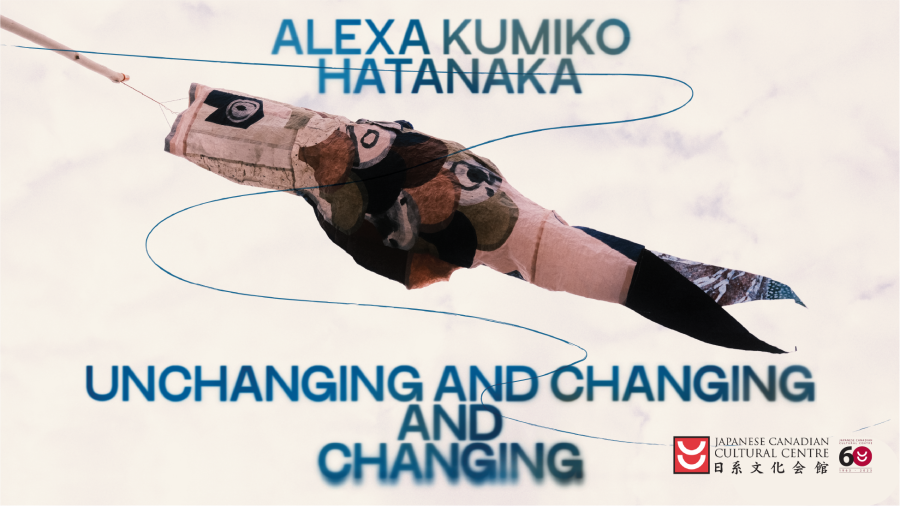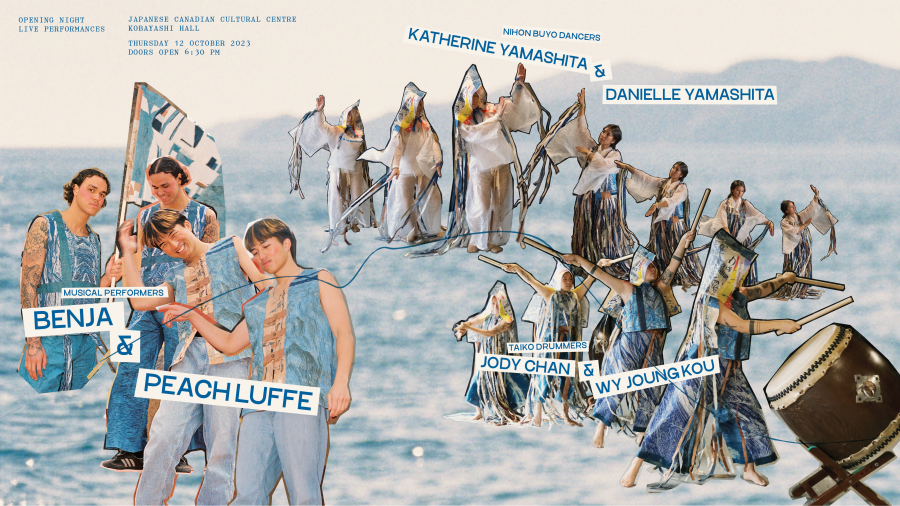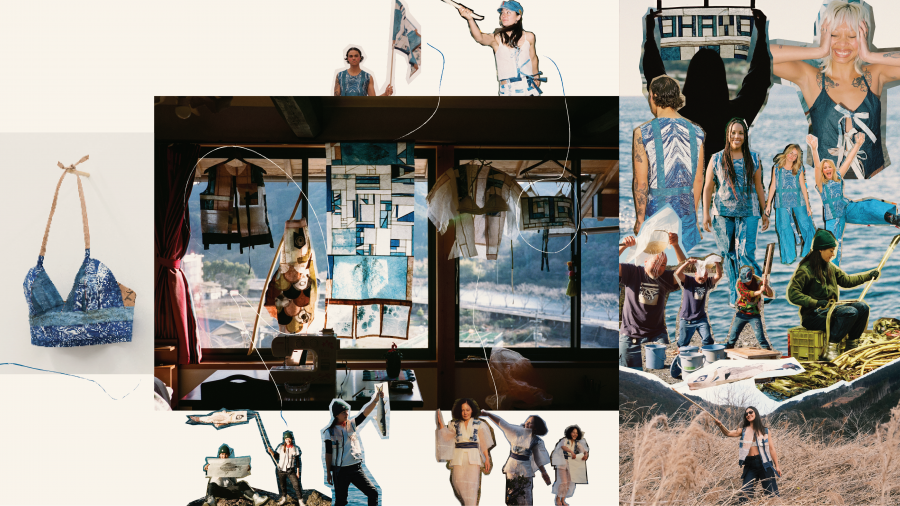Unchanging and Changing and Changing Exhibit opening
EXHIBITION OPENING AND LIVE PERFORMANCES
THURSDAY OCTOBER 12, 2023
DOORS OPEN @6:30 PM, KOBAYASHI HALL
Free Admission | Cash Bar | Exhibition on View | Artist in Attendance
Please register for the opening night and live performances:
Solo exhibition curated by Chiedza Pasipanodya
Japanese Canadian Cultural Centre, Toronto, Canada
September 23–November 25, 2023
Sneak Peek! as part of Nuit Blanche Toronto September 23, 2023, 7 pm–7 am
Read more in the press release
'Unchanging and changing and changing' is a solo exhibition and collaborative Nihon-buyō dance & Taiko drum performance by Alexa Kumiko Hatanaka that features wearable paper artworks that are imbued with the life of the performers alongside the histories of craft and place that inform them.
A reflection on well-being and selfhood, the works unite and contrast needs for protective armours and “inverse armours,” the latter activated by dance, music, and friends to encourage expression and joy. Hatanaka reflects on personal aftershocks from tsunamis, both real and metaphorical. Her work integrates her formative childhood experience in dance at the Japanese Canadian Cultural Centre and is steeped with her recent time spent at a fourth generation paper mill in Japan. Her ethereal work collapse time and string together interconnected histories held within the threads, repairs and fibres of her practice: ancestral ties; the lineage of printmaking, inks, and natural dyes; personal narratives incorporating past printmaking blocks; and scraps of papers sewn into the next and the next work.
A video shares the intergenerational experience of the papermakers in Japan and an intimate look at Hatanaka’s process while she was immersed in the very lands and community that create the specific paper she has used for over a decade. She intentionally chose a paper that is delicate yet strong, and heartfully shares its possibility into the future and its significance as an over 1000 year sustainable craft technology.
EVENT AGENDA
| Time | Activities |
|---|---|
| 6:30pm | Doors open |
| 7:00pm | Live musical performance by Benja and Peach Luffe in washi wearables. |
| Unchanging and changing and changing, a collaborative performance between Taiko drummers Jody Chan & Wy Joung Kou and Nihon Buyo dancers Danielle Yamashita & Katherine Yamashita in washi wearables. | |
| 9:00pm | After party |
| DJ Velma and more to be announced ♪♪♪ |
Opening night begins with musicians Benja and Peach Luffe performing in custom washi wearables made by Hatanaka.
Following the music, a live performance of the same name, Unchanging and changing and changing, accompanies the exhibition. This performance brings together Taiko drumming, Nihon Buyo dance and Japanese washi paper techniques used for costuming. These three Japanese expressions are combined in the spirit of celebrating the potential of hybrid, personal and contemporary interpretations of historical practices. Developed collaboratively with Hatanaka, the performance features drummers Jody Chan & Wy Joung Kou and a mother and daughter dance duo Katherine Yamashita & Danielle Yamashita, the latter whom Hatanaka danced with as a child.
The performance traces a story that reaches back generations and toward a hopeful future despite the certainty of grief and gravity. Percussion and movement meld quietly and then persistently propel through a constellation of selfhood, tsunami, dis/order, change, koi, and Obon Odori.
WASHI & ARTIST'S PROCESS
“The softness of the Japanese washi paper and its transparency represents the environment where the natural materials were picked, under a clear sky and near a magnificent river. The warmth and robustness of Japanese washi paper comes from the efforts of farmers and their love for this land where they have lived for several generations. It is thanks to this strong bond between people and nature that the Kashiki paper production company was able to produce Japanese washi paper.” — Kashiki Seishi, fourth generation paper mill in Japan where Hatanaka was an artist in residence.
The durability of washi and the tenacity of its long-standing techniques behave as a symbol for resilience that resonates with Hatanaka’s diasporic identity. A dynamic bond between material and body is present, resulting in personal reflections on the various ways that connections to ancestral crafts nurture a meaningful integration of art-making, identity-making, and community-building.
In her linocut print work, Hatanaka embeds impressions in the washi to convey topographical imageries that resemble chiseled snow, stone, water, earthquakes, or the gesture of a map. These organic forms use pattern-making and repetition to reference mental and emotional geographies as much as physical ones.
ACKNOWLEDGEMENTS & CONTRIBUTORS
Curator: Chiedza Pasipanodya
Nihon Buyo Dance & Taiko Drum Performance: Danielle Yamashita, Katherine Yamashita, Jody Chan, Wy Joung Kou
Musical Performance: Benja, Peach Luffe
DJs: DJ Velma & more to be announced ♪♪♪
Documentary Video & Photography: Johnny Nghiem
Collaborative Photo Work: Maya Fuhr, Holly Chang, Ashok Mathur
Advisory Support: Johnny Le
Fabrication: Yorgo Liapis, Dylan Moore
Washi Wearable Modelling: Benja, Peach Luffe, Sima Sepehri, Elissa Mielke, YGC, Leah Mersky, Felicia Daisy, Mist Walker
Production Assistance: Akash Inbakumar, Yahn Nemirovsky, Felicia Daisy, Gideon Näf, Danny Cardoso
Graphic Design: Christine Xia
Performance Video:
Zachary Hertzman and Johnny Nghiem
Special thanks to Kashiki Seishi, Kayoko Ichinomiya, Patel Brown Gallery, Studio RAW and Raging Asian Womxn Taiko Drummers, Victor Chin, Max McLarty, Deborah and Glenn Hatanaka, Julie Cawthorne, Miao Liu, Cybèle Young, Tatsuyuki Kitaoka, Sameer Cash, Crispin Day, James Arthurs, Su Yen Chong, Mayumi Lashbrook, Claire Shea, John Donald, JCCC Art Committee and Ayame Kai dancers: Susan, Jackie and Tami, Hisanao Kataoka, Akari Kataoka, Chi Family, and The Japanese Paper Place.
This exhibition was made possible through generous funding from the Canada Council of the Arts and the Ontario Arts Council.
This exhibition was made possible through generous funding from the Canada Council of the Arts and the Ontario Arts Council.





